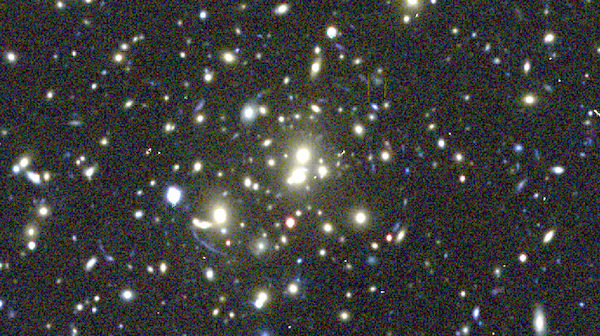The gravitational warping of distant starlight seen here (click for the full view) is caused by a galaxy cluster located nearly 4 billion light-years away, visible at the center of this image. Clusters of galaxies are the largest gravitationally bound systems in the universe, and their abundance and distribution can reveal information about how the universe expanded and how its structure formed and evolved. A team using the South Pole Telescope recently conducted a new survey — the SPTpol Extended Cluster Survey — of 2,770 square degrees of sky, hunting for the signatures that galaxy clusters imprint on the cosmic microwave background spectrum. In a publication led by Lindsey Bleem (Argonne National Laboratory, University of Chicago), the team describes the result: the discovery of 266 cluster candidates, 244 of which have already been confirmed visually via archival and follow-up observations like the one shown above (taken with the PISCO imager on the 6.5 m Magellan/Clay telescope at Las Campanas Observatory in Chile). To learn more about the study, check out the original article below.
Citation
“The SPTpol Extended Cluster Survey,” L. E. Bleem et al 2020 ApJS 247 25. doi:10.3847/1538-4365/ab6993

2 Comments
Pingback: SPACE TODAY
Pingback: A Busca Por Distantes Aglomerados de Galáxias | Mestre Jedi